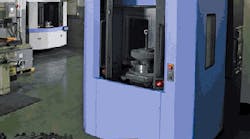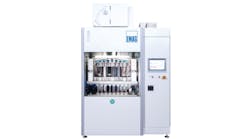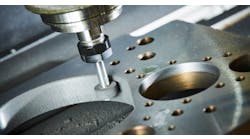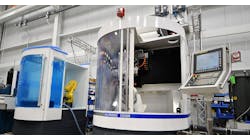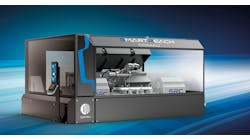This Haas CNC lathe allows General Carbide to produce over 50 grades of tungsten carbide tooling for cutting and metal forming applications. A Pennsylvania tooling manufacturer has installed almost $2 million worth of new machining and turning equipment it expects will help it meet demand for new dies and metal-forming tools, from shops supporting a wide variety of industrial segments. General Carbide Corp. produces tooling in over 50 grades of tungsten carbide for cutting and metal forming, supplied to customers working to produce oil-and-gas flow control equipment, stamping die components, large PM dies, and roof tiles.
“I am pleased that the company is in a position to make these significant upgrades for the future,” said Mona Pappafava-Ray, owner and president of the Greensburg, Penn., shop. “The fact that our sales have been strong since late-2009 is a testament to the hard work and dedication of our management team and production staff.
The shop’s strategy is to invest more than $1 million annually to improve its operation with new capital equipment and system, and over the next 12 months, General Carbide said it plans to acquire a new CNC press that will improve its ability to press and sinter parts in high volumes with better accuracy.
“Our customers appreciate the innovative thinking, technical expertise and personalized service that differentiate us from competitors,” she added.
The latest investments include a Doosan turning center that General Carbide expects will improve its shaping capabilities, as well as a SyteLine enterprise resource planning (ERP) platform, with new IT hardware and engineering software, too.
The investment strategy appears to be justified by General Carbide’s recent performance. The shop endured the recent manufacturing recession without cutting back employment, though an across-the-board salary and wage cut from October 2008 through September 2009 was the sort of management decision that supports the company’s long-term approach. Even the owner/president was included in that decision, which while risky was undertaken with the confidence that it would pay off. Pappafava-Ray maintains that that a long-term commitment to employees is necessary in order to develop a work environment in which managers and production employees work together to develop new business opportunities even when production levels are low. Now, General Carbide is able to advantage of new opportunities because its workforce is stable and capable.
In addition, the “lost” salaries and wages have been restored in the form of a 2010 year-end bonus package and restored payroll levels during the first half of 2011.
